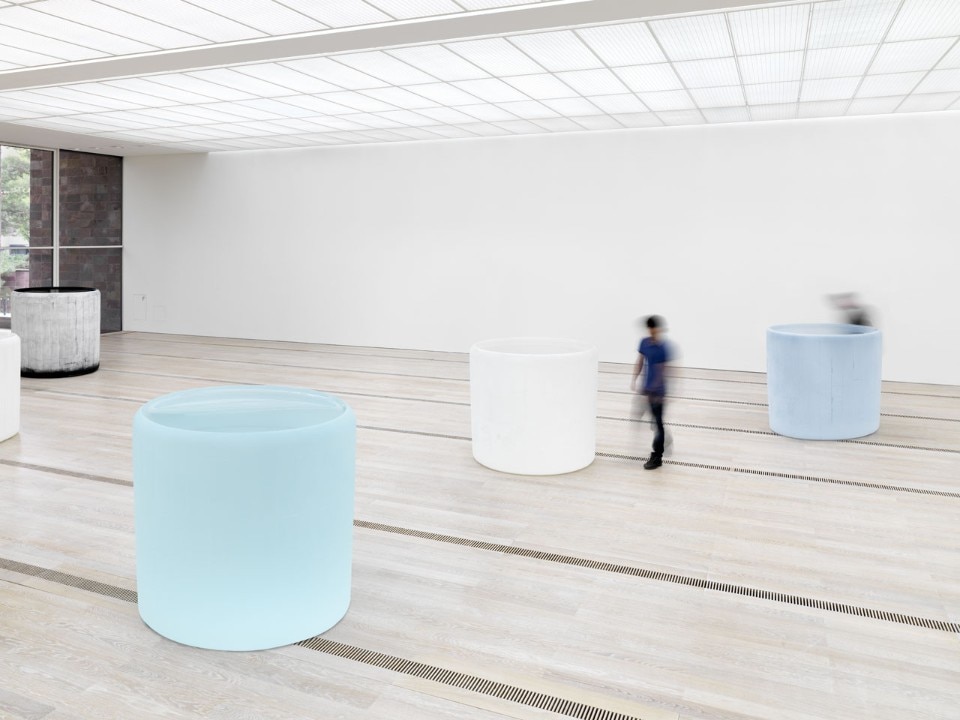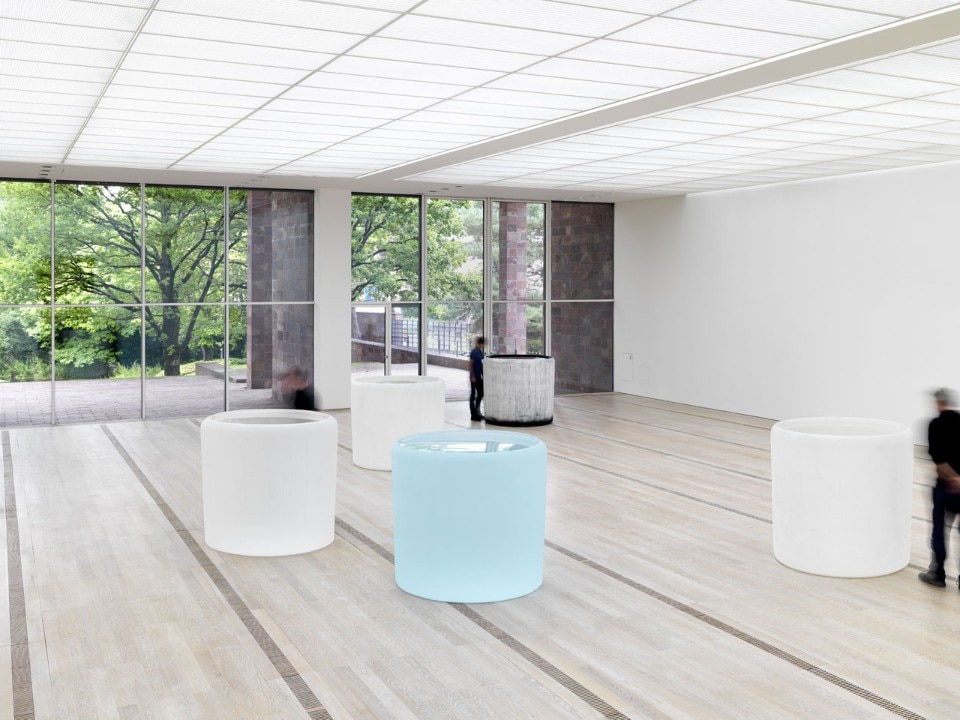
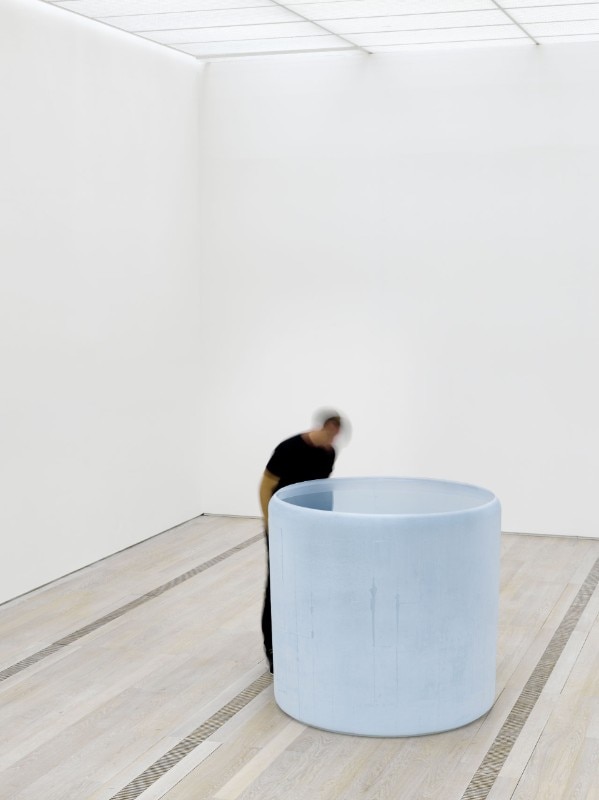
Now the Fondation Beyeler presents an exhibition on her work, conceived with her assistance and specifically for the museum’s spaces. Gathered in groups, the works express renewed vitality in the rooms overlooking the water, garden and yellowed fields of early autumn.
The exhibition starts with a.k.a., 2008–2009, a number of photographic portraits, presented simply and in diptych form, of the artist captured at different times and ages in life. The combination does not follow any chronological criteria nor does it obey any form of hierarchy. The dialectic between continuity and change becomes explicit and the changes are emphasised. Before a.k.a. you have the impression that every picture expresses a separate identity.
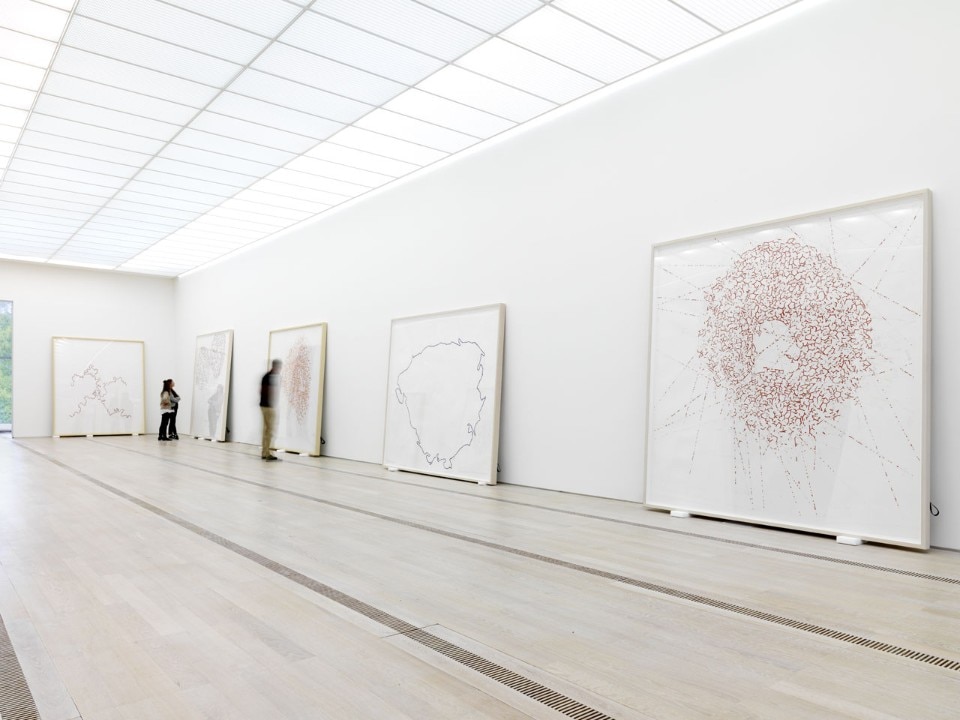
With the aim of involving the visitors, many of the notes speak directly to them in a friendly tone. The work displayed in the exhibition lives on the walls but is also the focus of a book of the same title. Indeed, books play a key role in the artist’s practice and their titles frequently refer to the possibility of ordering and categorising although the book content then rejects this as in the case of another Horn book on the water of the Thames, the Dictionary of Water. Again, there is no possibility of order for the illustrations of the water, which is carried by the current, endlessly flowing and altering, changing in form and reflecting external and internal conditions – without, however, undermining its essence.
The exhibition also shows a group of large, abstract drawings, actually produced via a complex and meticulous compositional technique: other drawings made previously with mineral pigment are cut up and the many snippets glued onto new paper, with the addition of delicate annotations or small lead-pencil strokes. The whole evokes maps, island perimeters and large bouquets of flowers.
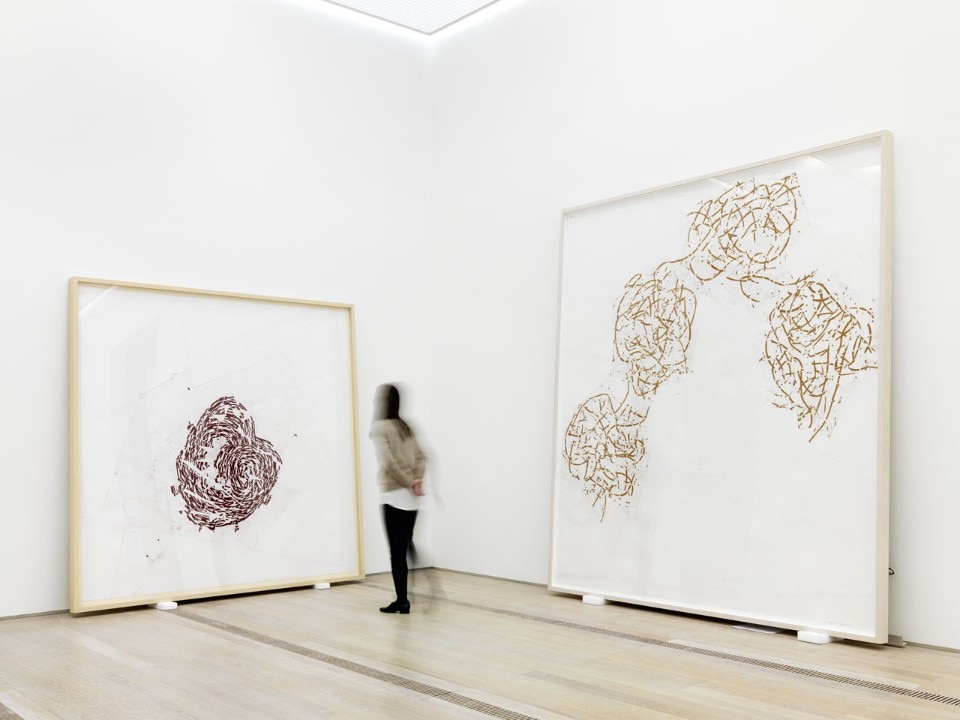
until 1 January 2017
Roni Horn
Fondation Beyeler
Baselstrasse 77, Riehen – Basel

